Kia Recalls 256K Souls for Steering Issue |
- Kia Recalls 256K Souls for Steering Issue
- Hyundai Sonata Plug-In Hybrid Priced from $29,681
- The Road Travelled: 15 Years of the Toyota Prius
- Top 10 Brands With the Best Car Buying Experience
- Infiniti to Fight Mercedes S-Class with Plug-in Hybrid Flagship
- Top 10 Most Anticipated Debuts of the 2015 LA Auto Show
| Kia Recalls 256K Souls for Steering Issue Posted: Over 256,000 Kia Soul compacts are being recalled in the U.S. The recall affects Kia Souls from the 2014-2016 model years and according to the recall notice, the affected vehicles could have their steering fail. The Korean automaker notes that the adhesive holding steering gear parts together may not be strong enough and the parts can separate. As a result, the issue could cause loss of steering, potentially increasing the risk of a crash. Kia originally found the problem after getting warranty reports from dealers. No crashes or injuries related to the issue have been reported. SEE ALSO: 2016 Kia Soul EV Gets New Budget Trim for California Those affected by the recall will be contacted in late December as Kia will begin repairs on December 22. To fix the issue, dealers will inspect and replace a steering gear plug if necessary as well as install a bolt for additional reinforcement. Discuss this story on our Kia Soul Forum Loading, please wait... |
| Hyundai Sonata Plug-In Hybrid Priced from $29,681 Posted: The 2016 Hyundai Sonata Plug-In Hybrid is hitting dealers today and detailed pricing has been announced. The cheapest Sonata Plug-In will sell for $34,600, though Hyundai says that will drop down to $29,681 after federal tax credits are applied. For that price, the car packs 17-inch wheels, a premium audio system, an eight-inch touchscreen along with blind spot detection and rear cross-traffic alert. Sonata Plug-In models are able to travel up to 27 miles on electricity alone and have an overall range of about 600 miles. The car is rated at 99 mpge, while during regular hybrid operation it gets a rating of 40 mpg. SEE ALSO: 2016 Hyundai Sonata Hybrid Review Powering the Plug-In Hybrid is a 2.0-liter four-cylinder engine mated to a 50 kW electric motor, making a total of 202 horsepower. Hyundai says it takes less than nine hours to recharge from a 120V outlet, while a level-two 240V charger will get the car back to full in under three hours. For the Sonata Plug-In Hybrid Limited, customers will have to pay $38,600, which gets cut to $33,681 after the same federal tax credit. That extra cash brings along more safety features like forward collision warning, lane departure warning, automatic high beams and rear parking sensors. An electronic parking brake, driver memory seat, heated steering wheel, ventilated front seats and smart cruise control also come on the Limited model. Discuss this story at our Hyundai Sonata Forum Loading, please wait... |
| The Road Travelled: 15 Years of the Toyota Prius Posted: Does the 2016 Toyota Prius need an introduction? Let's be real. It's going to be reliable and fuel efficient, so you just know it's going to be a hit with environmentally conscious drivers. How do you know all that? Well, history repeats itself, and each generation of the Prius has been a hit. So much so that the word "hybrid" has become synonymous with "Prius." Looking back at the history of the hybrid, you may be surprised to know that it first hit North American roads 15 years ago, in the year 2000. Toyota launched its first hybrid, the Prius, right when that techy overconfidence that's only possible after the hype and horror of Y2K died down. Interestingly enough, it wasn't the first mass-market hybrid to hit the North American buyers; the Honda Insight managed that feat. But here we are 15 years later and the Prius is having the last laugh. Generation 1: The Fresh Faced, Fuel-Friendly CompactIt didn't look like much, in fact, the first-generation Prius could be easily described as a funny looking Toyota Echo, but underneath that sleepy exterior was a lot of fuel-saving technology. Under the hood was a 1.5-liter four-cylinder engine and a permanent magnet AC electric motor. Stashed under the rear passenger seats was the 276-volt nickel metal hydride (NiMH) battery that fed that electric motor. The gasoline motor utilized a more efficient Atkinson cycle rather than a traditional Otto cycle, a trait that is still used by Toyota hybrids (and even some non-hybrids, like the 2016 Toyota Tacoma) today. According to the EPA archives, the first-generation Prius earned 42 miles per gallon in the city and 41 on the highway or 41 mpg combined. This made the hybrid a whopping 9 mpg more efficient than the lighter and smaller Toyota Echo. Penny pinchers loved the hybrid, as it cost just $19,995 and was affordable at the pumps. "The [first-generation] Prius hybrid represented a practical way of lowering the environmental impact of the automobile," said Geri Yoza, Toyota national business planning manager for advanced technology vehicles. "Our early launch strategy towards cleaner air ensured that we would be part of the solution, not pollution. The vehicle debuted at the 1996 Tokyo Motor Show and launched in Japan in December 1997." According to Yoza, the Prius was not just designed to get eye-popping mpg numbers. "High mpg was important, but it was not the only factor," he said. "[It needed to be] a small vehicle with a lot of room, high fuel economy, and low emissions with no sacrifice in performance." But Yoza points out that Prius allowed Toyota to add another badge to their reputation. "It allowed us to broaden our corporate image beyond Toyota's traditional attributes of quality, dependability and reliability," he said. "We saw the introduction of Prius as an opportunity to gain an environmental and a technology image, offering the market a clean solution without compromise. It was also an opportunity to gain public acceptance and build consumer demand for an all-new and relevant technology." The first-generation Prius was a surprising success early on, selling as many as Toyota could build. It managed to maintain its popularity all the way until the next-generation product. "As we approached the launch of the second-generation Prius, the organization reflected on the first-generation model and its positive environmental impact on the brand," said Ed LaRocque, Toyota national advanced car manager. With the first gen-Prius, the rest of the world caught onto Toyota's hybrid idea. "Consumer confidence and the environmental benefits of hybrid technology were both increasing. Sales for the first-generation model broke through the 20,000 level for the first time in 2002." Generation 2: The Big HitIf ever you needed an example of an automaker using momentum in their favor, here it is. "We believed that the 2004 sales target of 36,000 units would be challenging and likely decline over time as competitors entered the market," said LaRocque. "To achieve increased volume, the evolution of Prius would need to transition from 'Early Adopters' looking for the latest technology to the risk adverse 'Early Majority.'" That strategy worked out. In 2004, with the second-generation Prius, U.S. sales totaled 54,000 and then doubled by 2005 to 108,000. "Our marketing efforts included traditional advertising and non-traditional programs such as consumer and opinion leader ride and drive tours, alliances with government associations such as the U.S. Department of Energy, and strategic partnerships with organizations such as the National Parks, California State Parks and American Lung Association," said LaRocque. "The Hollywood community continued to be important advocates, providing unsolicited testimonials for the Prius." Celebrities like Cameron Diaz, Larry David, David Duchovney, Matt Damon, Leonardo DiCaprio and Tom Hanks have all been seen in Toyota's hybrid, helping the car gain more widespread appeal. According to LaRocque, the goal was for the second-generation Prius to reach mainstream acceptance, and eventually become a halo vehicle for the Toyota brand. Looking back, it's easy to place a checkmark next to those milestones. The second-generation car is likely the car you think of when the word Prius is uttered. It featured that now-iconic liftback design, which gives the Prius its impressive 0.26 coefficient of drag. The car became bigger and more practical, thanks to a flat-floored cargo space. The second-generation Prius also had more power, making it easier to live with for U.S. buyers. "It's also worth noting, when the second-gen Prius launched, Toyota held the line on the base MSRP of $19,995, which was the base MSRP when the first-gen Prius launched in the U.S. in July 2000," adds Sam Butto, public relations manager for Toyota. The second-generation model holds the record for Prius sales in the U.S., with 181,221 examples of the car moving in 2007. Generation 3: Spreading the LoveToyota built on its hybrid hype to deliver more hybrids to more people. The Prius wasn't just a model, it was a brand. First on the scene was the Prius v, which was larger and more practical for families. It uses the same powertrain as its liftback sibling and has been popular since its launch in 2011. The Prius c expanded the lineup in the other way. It's a smaller, more compact model that trades space for even more fuel efficiency and is rated to get 50 mpg combined by the EPA. Since its debut in 2012, it has sold 118,302 copies in the U.S. Then came the Prius Plug-In Hybrid, a car that featured a bigger battery and could drive completely emissions free for 11 miles, and featured a total range of 540 miles. A bit more niche of a vehicle, the car sold more than 12,000 examples every year it has been on sale since 2012. Of course, the Prius v, c and Plug-In Hybrid all acted as the backup singers to the still-popular Prius. The 2010 Prius was rated at 50 mpg by the EPA, about a 10-percent improvement, thanks to its improved aerodynamics, a bigger engine and other smart features that allowed the car to be more fuel friendly. Some of those clever innovations include a sliding glass moonroof that's packed with solar panels that power a new ventilation system. The Prius also featured a remotely operated air-conditioning system, so drivers can set the interior temperatures before getting in the car. Furthermore, the third-generation Prius used low-energy LEDs in its head and tail lights, helping to keep energy consumption down and MPGs high. And despite using a bigger engine than before, the Prius was able to save some weight by using aluminum for the hood, rear hatch, front stabilizer bar and brake calipers and used super high-tensile strength steel in the inner rocker panel, center pillar and roof reinforcement. Generation 4: The Refined Hybrid HaloFor the 2016 model year, Toyota introduces its fourth-generation Prius and shows off what over 15 years of experience in the hybrid market has taught the automaker. Like the jump between the second and third generation models, the 2016 Toyota Prius will look to be about 10-percent more fuel efficient, thanks to a retuned 1.8-liter four-cylinder engine and more. "The engineering team found various ways to improve fuel efficiency," said Beatris Diaz, Toyota marketing administrator for advanced technology vehicles. "[Including] smaller and lighter hybrid system components, more efficient combustion engines, world-leading thermal efficiency, and improved aerodynamics." The new Prius will be available with two battery options. The tried-and-true nickel-metal hydride battery will still be available, while a new lithium ion battery pack will be offered. Both battery packs have been redesigned to be more energy dense, and are capable of delivering more power in a smaller package. The changes go deeper than that, with the Prius featuring an all-new modular architecture that improves rigidity and allows for the usage of more lightweight materials. But this time around, there's more than just fuel economy to boast about when it comes to the Prius. "To expand our Prius customer base, we determined that the vehicle has to be about more than just mpg," said Diaz. "Buying a Prius has always been a smart decision, but we wanted to create a more emotional reaction to the car. We did this through a more expressive exterior design, an improved driving experience and a simple, yet beautiful interior interface." Indeed, the Prius looks futuristic, but it also sports new technology that backs up that expressive sheetmetal. One of the most important features available is the Toyota Safety Sense suite of driver assistance and collision prevention technologies. The Prius will be able to automatically brake in order to avoid a collision. Another high-end feature making its way to the 2016 Toyota Prius is adaptive cruise control. "The striking styling, smart technology, and enhanced driving dynamics will help broaden the market for the Prius," said Diaz."The industry-leading fuel economy will continue to attract current customers, which are among our most loyal Toyota customers." Our first drive review of the Prius is on the way, but is there any doubt that it'll hit all of its targets? If history is any indicator, this new Prius will continue to keep Toyota at the forefront of the hybrid vehicle pack. Loading, please wait... |
| Top 10 Brands With the Best Car Buying Experience Posted: The J.D. Power 2015 U.S. Sales Satisfaction Index (SSI) Study results are in and overall sales satisfaction has improved slightly compared to last year. Each year, J.D. Power provides a comprehensive analysis of the new-vehicle purchase experience from the customer perspective, with the study measuring the ability of dealerships to not only manage the sales process, but how satisfied customers are with price negotiation, finance and insurance processes as well as final delivery. SEE ALSO: Korean Brands Soar, Japanese Cars Lag Behind in J.D. Power Initial Quality Study The results are tallied up on a 1,000-point scale to determine just how satisfied customers are with the buying process. This year, overall sales satisfaction in the U.S. improved to 688 from 686 in 2014. Some dealerships benefited from taking advantage of technology tools in their sales process to deliver a superior customer experience. For example, salespeople who used tablets to record customer vehicle needs or to demonstrate car features earned higher satisfaction scores than salespeople that did not. Check out a list of the top 10 overall automakers in the J.D. Power 2015 U.S. SSI Study. AudiComing in 10th place overall, Audi improved slightly on its 2014 score of 726, rising two points to 728 for 2015. Among luxury brands however, Audi is below the average of 732 and is actually the fourth worst. LincolnIn 2014, Lincoln had a score of 724 so it is one of the most improved luxury brands for 2015 netting a score of 731. Still, Lincoln is a margin below the industry average. The good news for the American automaker is that it beat out Land rover (710), Volvo (708) and Acura (706) this year within the luxury category. BMWTied with Lincoln, BMW also scored 731 this year beating German competitor Audi. Last year, BMW had a score of 727 and has typically scored below the luxury brand average in the study. It is getting closer to the top each year but has its work cut out if it wishes to catch up to Mercedes-Benz. CadillacCadillac may be one of the pleasant surprises this year among luxury brands, scoring 738 in 2015 compared to 732 last year. In 2014, the American luxury automaker was actually below the luxury brand average of 734 but this year it bests it by six points. JaguarIt's a bit strange that Land Rover is so far down the list within luxury brands while Jaguar customers are extremely satisfied with the sales process. Last year, Jaguar ranked third among luxury brands with a score of 748, so it did stumble a bit scoring 739 this year. The British automaker is still above the luxury brand average, but sits in fifth place for 2015. InfinitiAnother luxury brand that saw a drop is Infiniti. In 2014, the Japanese automaker scored 749 to help it earn a second-place finish. This year however, it has an index ranking of 739 and is fourth among luxury brands. LexusLexus remained steady at 741 this year, the same score it earned last year. It did move up one rank among luxury brands to third place and is the highest-ranked Japanese automaker overall. Mercedes-BenzMercedes-Benz actually got bumped from its 2014 top-place finish, earning a score of 749 in 2015. Last year, the German automaker beat Lexus by a wide margin with a score of 761, but it appears Mercedes is falling behind when it comes to customer sales satisfaction. PorscheEarning the top spot among luxury brands this year is Porsche, with a score of 752. The German automaker actually jumped significantly compared to last year's score of 738 and its fifth-place ranking among luxury brands. In May, Porsche's U.S. chief, Detlev von Platen, called for the brand and its dealerships to improve customer satisfaction ratings – looks like it's paying off. MINIFor the sixth consecutive year, MINI ranks highest among mass-market brands as well as luxury brands. With a score of 762, MINI saw a 35-point improvement compared to 2014. The mass market brand average for 2015 sits at 681, so MINI is well ahead of the competition. In fact, its closest competitor in the mass market brands segment is Buick with a score of 707. Discuss this story on our MINI Forum Loading, please wait... |
| Infiniti to Fight Mercedes S-Class with Plug-in Hybrid Flagship Posted: Infiniti has begun development on its Mercedes S-Class fighting flagship which is based on the Q80 Inspiration Concept. The car will be a plug-in hybrid, with the Japanese brand benchmarking it next to the Mercedes S500 plug-in hybrid and the Porsche Panamera E-Hybrid. The Q80 Inspiration Concept featured a 3.0-liter twin-turbo V6 mated to an electric powerplant which created 550 horsepower and 553 lb-ft of torque combined. SEE ALSO: Infiniti Q80 Inspiration Concept Boasts 550 HP Hybrid Powertrain The engine that debuted in the concept is the first in a lineup of aluminum-based engines that is coming from Infiniti over the next two years. The concept's dimensions were sightly wider and shorter than the current S-Class. It is likely we will see the production version of the Q80 at a major auto show in 2016, while the car may launch as a 2017 model year vehicle. [Source: Auto News Europe] Discuss this story at our Infiniti Forum Loading, please wait... |
| Top 10 Most Anticipated Debuts of the 2015 LA Auto Show Posted: The 2015 L.A. Auto Show will host at least 50 vehicle debuts, many of which will be global premieres. There's a lot to be excited about next week if you're an automotive enthusiast. Although some automakers have already unveiled their debuts online, AutoGuide.com is excited to see many of them up close and personal and we will be sure to report all the details to our faithful readers. SEE ALSO: 2015 Los Angeles Auto Show Coverage But before we head over to the Los Angeles Convention Center, here's a list of our Top 10 most anticipated debuts of the 2015 L.A. Auto Show. Infiniti QX30
Now that the production Infiniti Q30 has debuted, all eyes are on the Japanese automaker's crossover. Previewed in concept form already, the Infiniti QX30 will be a compact crossover for the brand's lineup and, hopefully, Infiniti will stick closely to the styling of the concept. We've already seen spy photos of the car undisguised and it appears that Infiniti won't stray too far away. Range Rover Evoque ConvertibleLand Rover has already unveiled the Range Rover Evoque convertible online, but we can't wait to see this thing in person. It has been an on-again, off-again project for the British automaker over the past few years and now that it has become a reality, will it sell? Cadillac XT5Another vehicle that has already been unveiled is the Cadillac XT5 that is replacing the outgoing SRX. More importantly, the XT5 ushers in a new series of luxury crossovers for Cadillac, powered by a 3.6-liter V6 engine sporting 310 horsepower and 270 pound-feet of torque. Although the Cadillac XT5 debuted at the 2015 Dubai Motor Show, it will make its North American debut in Los Angeles next week. Mazda CX-9Mazda has already teased its next-generation CX-9 with the above sketch and it appears that it will borrow styling cues from the Koeru concept that debuted earlier this year at the Frankfurt Motor Show. The Japanese automaker has stayed relatively quiet as to what the CX-9 will be powered by or how it will be sized, so we'll have to wait until it is unveiled next week. Nissan SentraNissan has been on a roll lately with the all-new Altima and Maxima models, so we're excited to see what it has up its sleeves for the Sentra. Coming just three years after a full redesign, the refreshed Sentra is being touted as "almost all new" by the automaker, with Nissan's vice president for U.S. sales and marketing and operations adding that it is an "incredibly freshened Sentra." Buick LaCrosseThe 2017 Buick LaCrosse has been teased twice by the automaker now, hinting that it will be heavily inspired by the gorgeous Avenir concept. Buick is hoping that the new LaCrosse sedan will appeal to younger buyers with its all-new shape and styling. It will be interesting to see how the Avenir concept's styling has trickled down to production Buick models. Mercedes-Benz SLMercedes-Benz has teased the facelift for its SL-Class roadster and it looks heavily inspired by the new Mercedes-AMG GT. The question remains how the German automaker will differentiate the two and how the SL will continue standing on its own in the marketplace. Lamborghini Huracan RWDLamborghini is heading to the 2015 L.A. Auto Show with a rear-wheel-drive variant of its Huracan sporting a 602-hp V10 engine. Expect the model to be a limited production offering that will be lighter weight and have a higher price tag than the standard Huracan. 2016 Honda Civic Coupe |
| You are subscribed to email updates from AutoGuide.com News. To stop receiving these emails, you may unsubscribe now. | Email delivery powered by Google |
| Google Inc., 1600 Amphitheatre Parkway, Mountain View, CA 94043, United States | |

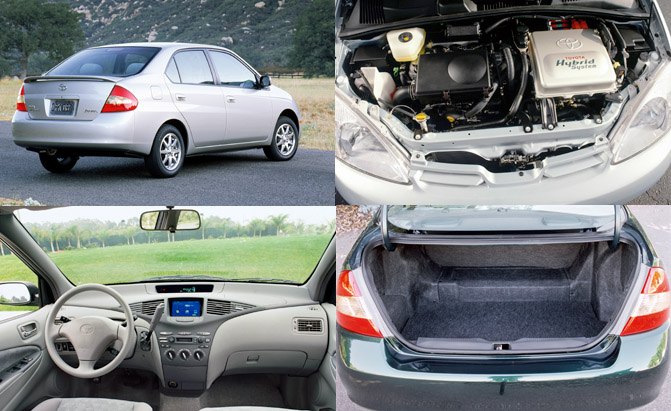
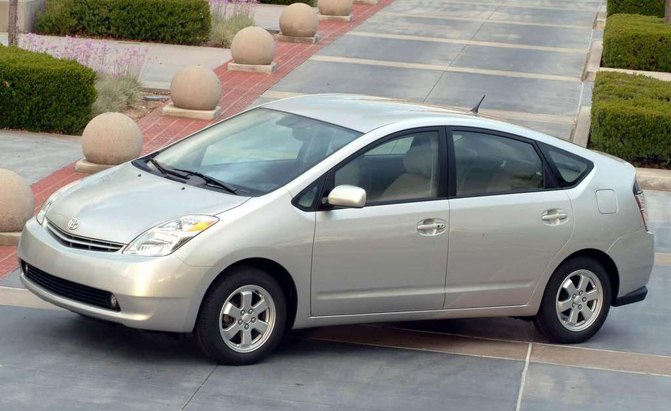
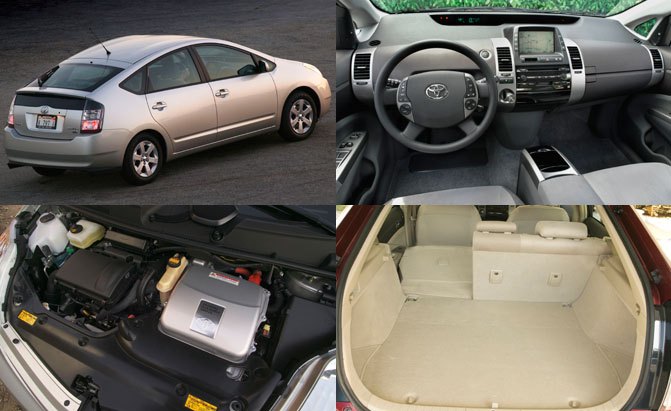
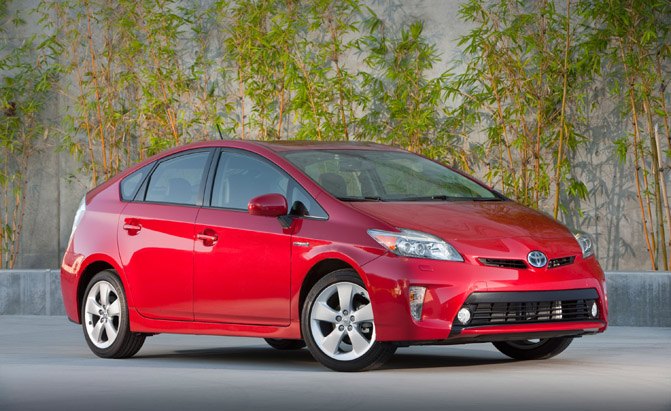
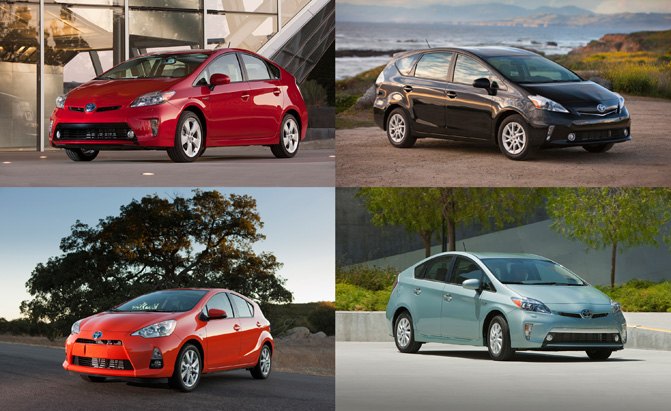


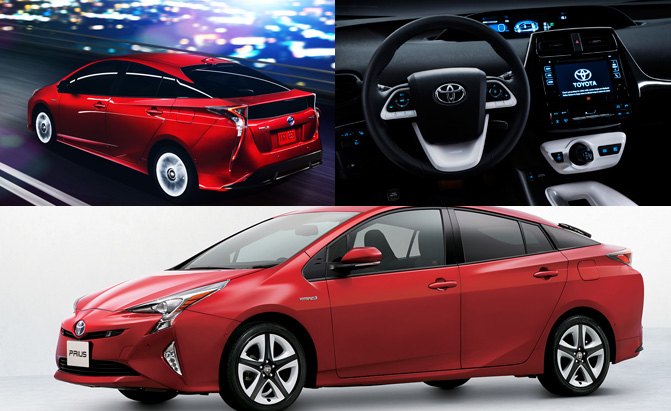



















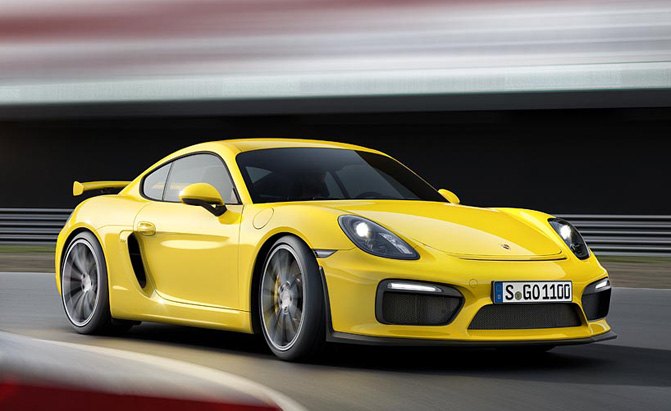
No comments:
Post a Comment